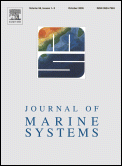
N. Martins, C. Soares and S.M. Jesus nmartins@ualg.pt csoares@ualg.pt sjesus@ualg.pt
SiPLAB - FCT, Universidade do Algarve,
Campus de Gambelas,
PT-8005-139 Faro, Portugal.
Comments: download pdf
file.
Ref.: accepted in J. of Marine Systems, January
2007.
Abstract
The requirement for rapid environmental assessment has motivated the
development of prediction tools, which allow the observation and
prediction in very short notice, of the ocean evolution in an interval
up to 3–4 weeks, in given littoral areas. Complex systems exist
nowadays, where multidimensional quantities like the
oceanographicbiogeochemical- optical-acoustic fields, are tracked in
time, melding measures and models of some or all the involved
quantities. At some point in the prediction system, the acoustic
forecast is computed by acoustic propagation models taking as input the
environmental forecast. Inevitably, the error of the acoustic forecast
as given by the model output, originates from at least two error
sources. The first is the environmental forecast error. The second is
due to the model inaccuracies, and to the dependence of propagation on
parameters not dealt with by the prediction system, like geometric or
geo-acoustic properties. The acoustic community has developed a large
number of acoustic inversion systems –based on e.g. matched-field
processors or travel-time tomography–, from which one can learn that an
accurate acoustic simulation requires feeding the acoustic model with
an environment which differs from the actual environment by a certain
gap. This requires that the environmental forecast as given by ocean
prediction systems be gap-compensated, prior to its inclusion in the
acoustic environmental input. This paper puts the environmental gap in
evidence, considering environmental forecasts, and historical and
inverted data, to define heterogeneous environmental inputs to the
propagation model. The corresponding acoustic outputs are compared to
actual data from the MREA ’03 sea trial. It is observed that acoustic
inversion can play a significant role in converting the environmental
forecast into the acoustic forecast.
Acknowledgement: this work
was supported under projects NUACE and RADAR and scholarship no.
SFRH/BD/9032/2002, from FCT (Portugal).